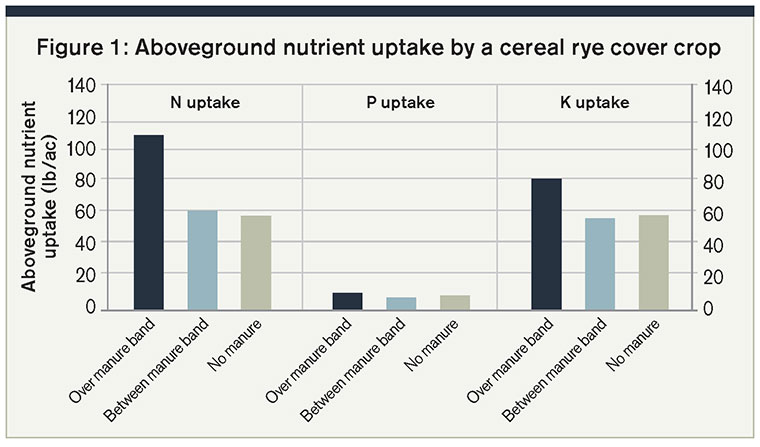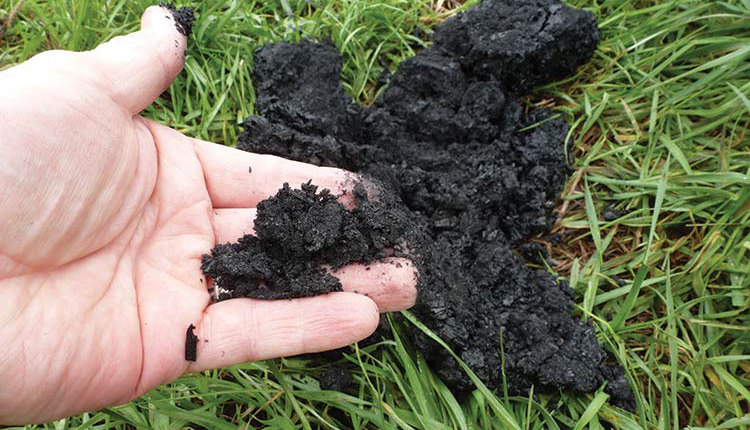Manure is an excellent source of valuable nutrients. However, it is susceptible to nutrient loss and impacts to water quality when applied long before a crop is present to take up the nutrients that manure provides.
Cover crops can help to bridge this gap. With proper management, cover crops and manure can work together to improve soil and reduce nutrient losses.
Manure adds nitrogen and other nutrients needed for soil microbial activity and crop growth. Cover crops can help capture and recycle those nutrients to the following crop and reduce the potential for nitrogen loss.
Soil microbial activity is enhanced with both manure and cover crops. This microbial activity has the potential to help with decomposition of cash crop and cover crop residue. Cover crops also help to improve soil structure and water infiltration.
Capture nutrients with cover
A research project at the Northeast Research and Demonstration farm near Nashua, Iowa, has been investigating the potential to use cover crops to capture manure nutrients for the last four years.
One aspect of the study is evaluating cereal rye cover crop growth and nutrient uptake in a corn-soybean rotation receiving swine manure. The manure was injected at a rate of 150 pounds of nitrogen per acre (lbs. N/ac). Cover crop aboveground biomass samples were collected in the spring just prior to termination and analyzed for nitrogen (N), phosphorus (P), and potassium (K) content.
Manure was typically applied in early to mid-October after soybean harvest, but before soils had cooled to 50°F. This type of manure application is common, yet highly susceptible to nitrogen loss. Research has found that biological activity in the soil slows considerably when soils are 50°F or cooler.
Bacteria in the soil convert ammonium-N from manure to nitrate-N, which is readily available to crops. The nitrate molecule carries a negative charge and is very soluble in water. It does not adhere well to negatively charged clay particles, so it can easily leach downward through the soil profile.
The warmer soils are when manure is applied, the more rapidly the ammonium will convert to nitrate. This raises the likelihood of losing the N prior to crop uptake the following year. For these reasons, cover crops can be especially beneficial in fields receiving fall-applied manure.
In the Nashua study, there were substantial differences in cover crop growth and nutrient uptake in the aboveground biomass directly over where manure had been injected (Figure 1, blue bars) compared to between the manure injection bands (gray bars). On average across the four-year study, the cover crop took up about 90 lbs. N/ac in plots receiving 150 lbs. N/ac from manure. The plots going to soybeans where no manure was applied took up about 60 lbs. N/ac.

These results suggest that the cover crop took up significant residual soil N following soybean and likely took up N from the manure itself. Cover crop N uptake in a previous eight-year study on these same plots was only 13 lbs./ac prior to soybeans and 21 lbs./ac prior to corn in a spring urea-ammonium nitrate (UAN) sidedress system with the same N application rate.
There was no significant difference in corn yield following the cereal rye cover crop in this study. The cover crop led to significantly lower nitrate-N concentrations in drainage water, thus helping to improve water quality. Plots with cover crops also tend to have more water flowing through the drainage system, suggesting that more water is infiltrating rather than running off the surface. This research demonstrates the potential for substantial benefits when adding a cover crop to fields receiving liquid manure.
Start simple
If you are new to using cover crops, it is a good idea to start with “easy” acres, such as corn silage or seed corn ground where you can get the cover crop established earlier. Starting with single-species cover crops like cereal rye or oats can simplify management.
Sampling both soil and manure will help determine where and how much to apply. Proper equipment setup and calibration will help to get manure and cover crop seed applied at a consistent rate and depth. Waiting until soil temperatures have cooled to below 50°F to apply manure will help to reduce N loss. The Nashua study has also shown a substantial corn yield benefit (an additional 40 bu/ac) from this approach.
Monitor carbon to nitrogen (C:N) ratios in both manure and cover crops to help fine-tune management. Generally, the higher the C:N ratio, the longer it will take for a cover crop to break down and release nutrients back to the soil.
Treat the cover crop like a cash crop and manage manure like you would commercial fertilizer. They are both valuable resources worth the investment of your time. Attention to detail, planning, and flexibility will help make manure and cover crops a success on your farm.
This article appeared in the February 2020 issue of Journal of Nutrient Management on pages 20 and 21.
Not a subscriber? Click to get the print magazine.





